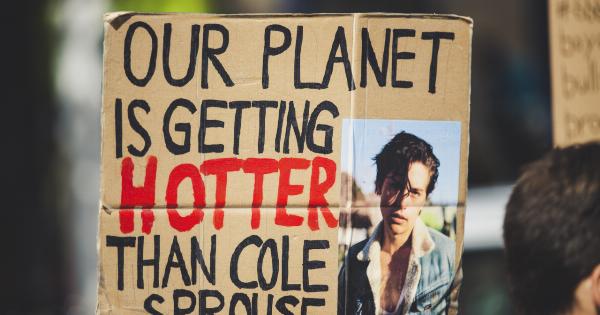The rhinoceros, or simply known as rhino, is one of the most magnificent and awe-inspiring creatures on earth. However, their population has been rapidly declining over the years due to various factors, posing a serious threat to their survival.
In this article, we will explore the causes behind the declining health of rhinos and discuss potential solutions to protect these magnificent creatures for future generations.
1. Poaching
Poaching is undoubtedly the most significant cause behind the decline in rhino populations. Rhino horns are highly sought after in illegal wildlife trade due to their perceived medicinal value in traditional Asian medicine.
As a result, rhinos are relentlessly hunted and killed, leading to a decline in their numbers. Strict regulatory measures and law enforcement are necessary to combat poaching and protect rhinos from this threat.
2. Habitat Loss
The destruction of natural habitats is another major factor affecting the health of rhinos. Rapid urbanization, deforestation, and expansion of agriculture have all contributed to the reduction of rhino habitats.
With diminishing natural resources and compromised ecosystems, rhinos face difficulties in finding adequate food, water, and shelter. Conservation efforts should focus on preserving and restoring habitats to ensure the long-term survival of these magnificent creatures.
3. Climate Change
Climate change has far-reaching consequences, impacting various aspects of rhino health. Rising temperatures, altered rainfall patterns, and extreme weather events can disrupt the delicate balance of ecosystems that rhinos rely on.
These changes can lead to food scarcity, inadequate water sources, and increased susceptibility to diseases. Mitigating climate change and implementing adaptive measures are crucial in protecting rhinos against this growing threat.
4. Disease Outbreaks
Rhinos are susceptible to various diseases, including tuberculosis and various viral infections. Disease outbreaks can have devastating effects on their already vulnerable populations.
Wildlife management agencies and conservation organizations need to work together to monitor, prevent, and control the spread of diseases among rhinos through vaccination programs and implementing strict biosecurity measures.
5. Inbreeding and Genetic Diversity
Due to the declining numbers of rhinos, inbreeding becomes a significant concern. Inbreeding can lead to reduced genetic diversity, making the population more susceptible to diseases and other stressors.
Implementing appropriate breeding programs and facilitating genetic exchange between populations can help maintain genetic diversity and improve overall rhino health.
6. Human-Wildlife Conflict
As human populations expand and encroach upon wildlife habitats, conflicts between humans and rhinos become more common. Rhinos, known for their territorial behavior, may pose a threat to human communities, leading to retaliatory actions.
Developing strategies to reduce such conflicts, such as creating buffer zones and implementing community-based conservation initiatives, can help protect both rhinos and local communities.
7. Pollution and Contamination
Pollution and contamination of water sources, primarily caused by human activities such as industrial discharge and agricultural runoff, can have severe consequences for rhino health.
Consuming polluted water or contaminated food can lead to various health issues and even mortality. Strict regulations and enforcement are essential to prevent pollution and ensure the availability of clean water sources for rhinos.
8. Illegal Wildlife Trade
Illegal wildlife trade extends beyond poaching for rhino horns. The trade also involves trafficking of rhino body parts, such as bones, skins, and even live animals.
This illicit trade contributes to the overall decline in rhino population and poses ethical and conservation challenges. Strengthening anti-smuggling efforts, imposing stricter penalties, and raising awareness about the consequences of wildlife trafficking can help curb this issue.
9. Lack of Awareness and Education
Lack of awareness among local communities and the general public about the plight of rhinos greatly hinders conservation efforts.
Educating people about the importance of rhinos in maintaining ecosystem balance, their cultural significance, and the need for conservation is crucial. By fostering a sense of stewardship and responsibility towards rhinos, we can encourage active participation in their protection.
10. Insufficient Funding and Resources
Inadequate funding and limited resources pose significant challenges in implementing effective conservation strategies for rhino health.
Governments, international organizations, and non-profit groups need to allocate more funds to support active conservation programs, research, anti-poaching efforts, habitat restoration, and public awareness campaigns.
Solutions for Rhino Health
Protecting the health and well-being of rhinos requires a multi-faceted approach involving various stakeholders, organizations, and communities. Here are some potential solutions for improving rhino health:.
1. Strengthening Law Enforcement
To combat poaching, it is imperative to strengthen law enforcement agencies and ensure strict penalties for illegal wildlife trade. Additionally, international cooperation and intelligence sharing can help dismantle organized wildlife crime networks.
2. Conservation and Restoration of Habitats
Prioritizing the preservation and restoration of rhino habitats is crucial.
Conservation organizations should work closely with governments and local communities to establish protected areas, create wildlife corridors, and implement sustainable land-use practices.
3. Climate Change Mitigation and Adaptation
Tackling climate change is essential for the long-term survival of rhinos. Reducing greenhouse gas emissions, supporting renewable energy initiatives, and implementing adaptive measures can help mitigate the impacts of climate change on rhino habitats.
4. Disease Monitoring and Prevention
Vigilant disease monitoring, vaccination programs, and biosecurity measures are essential to prevent disease outbreaks among rhinos. Collaboration between wildlife management agencies and veterinary experts is crucial in this regard.
5. Genetic Management and Breeding Programs
Implementing genetic management programs, such as genetic exchange between populations and captive breeding initiatives, can help maintain genetic diversity and improve the overall health of rhinos.
6. Conflict Resolution and Community-Based Conservation
Reducing human-wildlife conflicts through proactive strategies like creating buffer zones, providing alternative livelihoods for local communities, and fostering dialogue can help protect both rhinos and human welfare.
7. Environmental Awareness and Education
Raising awareness about the importance of rhinos and the need for conservation among local communities, schools, and the general public can foster a sense of responsibility towards these magnificent creatures.
8. Strengthening Anti-Trafficking Efforts
Enhancing law enforcement efforts to combat illegal wildlife trade, raising awareness about the consequences of wildlife trafficking, and supporting initiatives that disrupt illegal supply chains are crucial in tackling this issue.
9. Funding and Resource Allocation
Ensuring adequate funding and resources for conservation programs, research, and anti-poaching efforts is essential. Governments, international organizations, and philanthropists should allocate more funds for rhino conservation.
10. Collaboration and Partnerships
Collaboration between governments, conservation organizations, local communities, researchers, and other stakeholders is vital for the success of rhino conservation efforts.
Sharing knowledge, expertise, and resources can lead to more effective strategies for protecting rhino health.




























